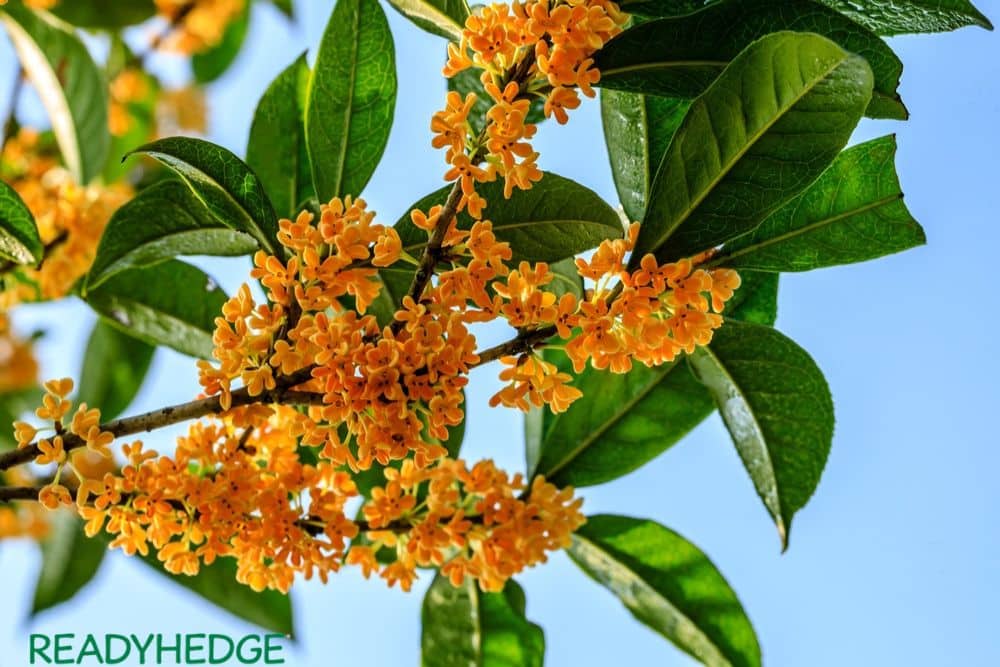Welcome to the captivating world of Osmanthus, a flowering plant renowned for its exquisite fragrance and timeless beauty. In this article, we will delve deeper into the realm of Osmanthus, providing you with detailed insights on its blooming season, appearance, optimal growing conditions, landscaping potential, cultural significance, and maintenance tips. Prepare to be enchanted by the allure of Osmanthus, as we explore its every facet.
Meet the Osmanthus
Osmanthus, scientifically known as Osmanthus fragrans, is a versatile evergreen shrub or small tree belonging to the Oleaceae family. Originating from East Asia, this elegant plant encompasses various species, including Osmanthus fragrans, Osmanthus heterophyllus, and Osmanthus delavayi, each possessing unique characteristics and charm.
The Blooming Season: When Does Osmanthus Bloom
The blooming season of Osmanthus is a much-awaited spectacle for garden enthusiasts. Depending on the specific species and prevailing climate conditions, Osmanthus generally bursts into bloom during late autumn or early winter. This timing adds a touch of enchantment to colder months, infusing gardens and landscapes with its delightful fragrance and ethereal beauty.
A Closer Look at Osmanthus Blooms
The blossoms of Osmanthus possess an innate charm that captivates the observer. Delicate and small, these flowers come in various shades, ranging from creamy white to vibrant yellow, with a few species even displaying hints of orange. Each blossom consists of four petals, intricately arranged in clusters or racemes, further enhancing their visual appeal and creating an awe-inspiring display.
An Aroma Like No Other
The captivating fragrance emitted by Osmanthus flowers is nothing short of magical. Described as a delightful blend of fruity, floral, and apricot-like notes, its scent pervades the air, offering an invigorating and uplifting experience. This extraordinary aroma has earned Osmanthus its well-deserved nickname, “Sweet Olive,” adding to its allure and desirability.
Optimal Conditions for Growth
Osmanthus is generally a hardy plant that thrives in moderate climates. It prefers a location with full to partial sunlight and well-drained soil. While it can adapt to a wide range of soil types, Osmanthus appreciates slightly acidic to neutral pH levels. Adequate watering and occasional fertilization contribute to the plant’s overall health, promoting vigorous growth and abundant blooms.
Landscaping with Osmanthus
The versatility of Osmanthus makes it an excellent choice for various landscaping purposes. Its elegant appearance, coupled with its intoxicating fragrance, makes it a popular selection as a standalone specimen, privacy hedge, or even as an espalier against a wall. Additionally, the compact growth habit and glossy foliage of Osmanthus lend themselves well to topiary and bonsai creations, adding artistic flair to any garden or outdoor space.
The Cultural Significance
Osmanthus holds profound cultural significance in different regions. In Chinese culture, it symbolizes love, romance, and fidelity, often used in traditional wedding ceremonies and moon festivals. Similarly, in Japan, Osmanthus is considered a harbinger of prosperity, happiness, and luck, making it an integral part of celebrations and auspicious events.
Pruning and Maintenance
To maintain a healthy and well-shaped Osmanthus plant, regular pruning is essential. After the blooming season, prune to remove any dead or damaged branches, promoting new growth and ensuring a more robust blooming period in the following year. This practice also allows you to shape the plant according to your preferences, enhancing its aesthetic appeal.
Final Thought
Prepare to immerse yourself in the enchanting realm of Osmanthus, where fragrance meets beauty. From its delicate blossoms to its intoxicating aroma, Osmanthus offers a sensory experience that captivates all who encounter it. By understanding its blooming season, appearance, optimal growing conditions, landscaping potential, cultural significance, and maintenance requirements, you can embrace Osmanthus as a cherished addition to your garden. So, embark on this fragrant journey and let the allure of Osmanthus infuse your surroundings with its timeless charm.
Frequently Asked Questions (FAQ)
Can Osmanthus be grown in different climates?
Osmanthus is adaptable to a wide range of climates, but it generally thrives in moderate climatic conditions. It can tolerate both hot summers and mild winters, making it suitable for various regions.
Does Osmanthus require special care or maintenance?
Osmanthus is a relatively low-maintenance plant. It appreciates well-drained soil, adequate watering, and occasional fertilization. Regular pruning after the blooming season helps maintain its shape and promotes healthier growth.
How long does the blooming period of Osmanthus last?
The blooming period varies depending on the species and local climate. Generally, Osmanthus blooms persist for several weeks, allowing ample time to relish their captivating beauty and fragrance.

